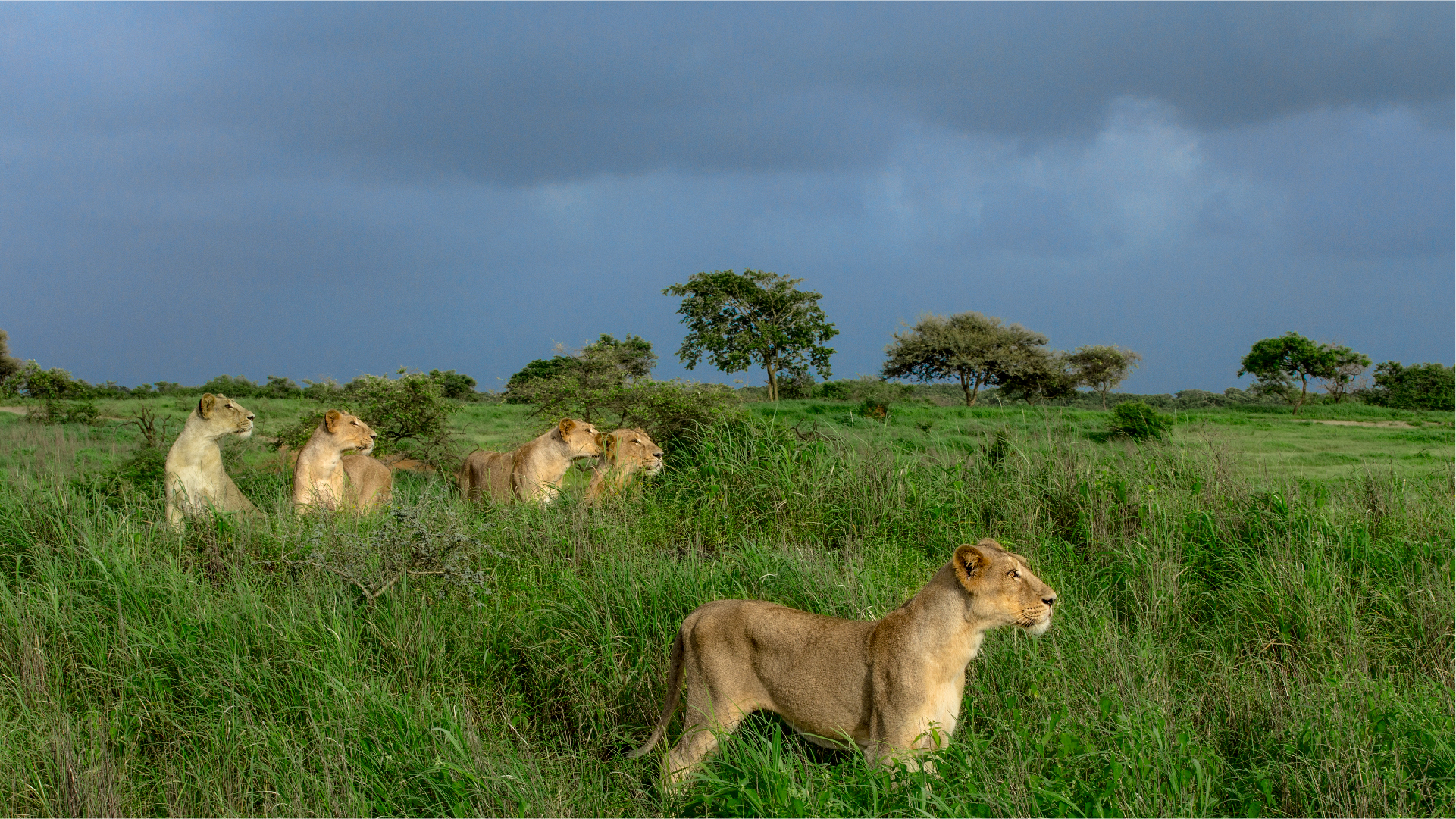
Sorry, we couldn't find anything that matches your search.
Destination

Famous Places to Explore in Hyderabad
A vibrant city with the imposing...

Raipur Tourist Places | Best Place to Visit
The stronghold of several erstwhile...

Ahmedabad
Declared as India's first UNESCO World...
#
Established by countries and recognised by UNESCO under its Man and the Biosphere (MAB) Programme, biosphere reserves aim to promote sustainable development in a region. India boasts 18 such reserves that shelter diverse species and conserve all forms of life. Besides offering amazing opportunities for scientific studies and researches, these reserves provide exciting wildlife game drives in the many national parks and wildlife sanctuaries they house.
Cold Desert, Himachal Pradesh
One of the most fascinating biosphere reserves in India, Cold Desert is noted for the preservation of the snow leopard. It is stretched along the Western Himalayas, from Ladakh to Kinnaur, in Himachal Pradesh. Declared a biosphere reserve in 2009, it comprises the Pin Valley National Park and its surroundings, Kibber Wildlife Sanctuary, Sarchu and Chandratal, etc. Some of the common fauna you can spot here include Himalayan black bear, Himalayan blue sheep, Himalayan ibex, snow pigeon, Tibetan gazelle, woolly hare, red fox, etc.
Nanda Devi, Uttarakhand
Lying in close proximity to the Valley of Flowers, Nanda Devi National Park is home to many endangered species such as the Himalayan black bear, brown bear and snow leopards. Lying at an elevation of 3,500 m above sea level, this reserve was inscribed a UNESCO World Heritage Site in 1988 and expanded to Nanda Devi and Valley of Flowers National Parks in 2005. The reserve is sprawled over an area of 630 sq km and is known for fauna such as Himalayan musk deer, mainland serow and Himalayan tahr, and flora such as fir, rhododendron, birch and juniper.
Khangchendzonga, Sikkim
Located in the Himalayas, the Khangchendzonga National Park comprises valleys, plains, glaciers, lakes and snow-capped peaks, chief of which is Mount Khangchendzonga, the third-highest peak in the world. A UNESCO World Heritage Site, it is a high altitude park that lies at an elevation of 8,586 m. The most popular species you can sight here include Himalayan tahr and snow leopard, clouded leopard, leopard, golden cat, leopard cat, jungle cat, jackal, large Indian civet, red panda, Tibetan wolf, blue sheep, musk deer, goral, etc.
Dehang-Debang, Arunachal Pradesh
Sprawled over an area of 5,112 sq km, this biosphere reserve includes steep terrain, subtropical forests, alpine meadows, grasslands and bamboo brakes. The area is rich in species of rhododendrons, orchids and Primulas. Some of the fauna you can spot here include rock python, leopard, snow leopard, clouded leopard, red panda, musk deer, serow, bison, Himalayan black bear, red fox, Indian wild dog, sloth bear, civet, squirrel, Assamese macaque, etc.
Manas, Assam
Located in the foothills of the Himalayas, which give way to tropical forests and alluvial grasslands, the Manas National Park is teeming with diverse fauna. These include endangered species like Indian rhinoceros, Indian elephant, tiger and pygmy hog. Some of the other animals you can spot include golden langurs, bison, deer, red panda etc. The park offers amazing opportunities for birdwatching as well. You can spot avifauna like Bengal florican, great pied hornbill, wreathed hornbill, greater adjutant, and many more. Since the park is watered by the Manas river, aquatic life flourishes richly in it.
Dibru-Saikhowa, Assam
Nature lovers and wildlife enthusiasts can head to the Dibru-Saikhowa National Park and Biosphere Reserve, which is one of the world's 19 biodiversity hotspots, situated along the banks of the Brahmaputra river. It is sprawled over an area of 340 sq km and comprises semi-evergreen forests, swamp forests, deciduous forests and wet evergreen forests. Some of the common species you can find here are tiger, elephant, squirrels, leopards, bears, jungle cats, slow loris, small Indian civet, Gangetic dolphins, rhesus macaque, wild pigs, capped langur, barking deer, sambar, etc. Dibru-Saikhowa is an identified Important Bird Area (IBA) housing such avifauna as lesser adjutant stork, black-necked stork, greater adjutant stork, large cormorant, crested serpent eagle, white-winged wood duck, greater spotted eagle, great pied hornbill, etc.
Nokrek, Meghalaya
Nokrek is the highest peak in West Garo Hills, and has a huge population of rare plants and animals. Some of them include a very rare species of citrus-indica, endemic to this place, which the locals call memang narang. Literally translated, it means the orange of the spirits. The park covers an area of about 47 sq km and has been listed as UNESCO’s Biosphere Reserve. Abundant wildlife including herds of wild elephants, animal species like leopard, pangolin, hoolock gibbon, python, hornbill, besides rare orchids abound in the sanctuary. The last few red pandas of the world also call this place home. One can also spot bird species like hornbill, peacock and pheasant. Other attractions are the Simsang River Game Reserve, Ronbang Dare Waterfalls and the Nokrek Peak.
Panna, Madhya Pradesh
With the meandering Ken river and spectacular waterfalls, this biosphere reserve attracts both wildlife enthusiasts and adventure seekers. Besides tigers, one can spot the gharial, a huge reptile of the crocodile family found only in the Indian subcontinent, and a variety of flora and fauna here. Spend a day or two here, and explore the park in a jeep or on the back of an elephant.
Pachmarhi, Madhya Pradesh
The UNESCO Biosphere Reserve of Pachmarhi is located at a height of about 1,067 m above sea level and nestled in the verdant valley of the Satpura range. Popular with nature lovers and sportspersons, the town was discovered in 1857 by Captain James Forsyth. The forest of Pachmarhi is home to many birds and animals, including the elusive tiger and the mighty elephant, and is blessed with rich plant life. Fragrant blackberry plantations and thick clusters of bamboo dominate Pachmarhi, and a trip to the reserve is like a lesson in nature and its bounty.
Achanakmar-Amarkantak, Madhya Pradesh-Chattisgarh
Comprising a topography that includes high mountains, plains and shallow valleys, this biosphere reserve has almost 60 per cent of its area dedicated to moist deciduous forests. It is home to a diverse variety of flora and fauna, including four-horned antelope, Indian wild dog, Saras crane, sacred grove bush frog, Asian white-backed vulture, etc.
Kutch, Gujarat
Rann of Kutch in Gujarat is a large marshy and saline tract, with sparse vegetation and minimal rainfall. Comprising the Little Rann of Kutch and the Great Rann of Kutch, this ecosystem is home to the unique Wild Ass Sanctuary and also has over one lakh flamingos breeding here every year.
Similipal, Odisha
Comprising dense forests, beautiful meadows, pristine waterfalls and gurgling rivers, Simlipal National Park is home to about 1,000 varieties of plants, of which there are 96 types of orchids. Some of the common faunae you can find here include elephants, black panthers, leopards, four-horned antelopes and avifauna like grey-headed fishing eagle, red-breasted falconet, white-eared bulbul, East-Himalayan long-tailed minivet, etc.
Sundarban, West Bengal
Home to the unique royal Bengal tiger, the Sundarbans is a UNESCO World Heritage Site, inscribed in 1987. One of the largest mangrove forests in the world, the Sundarbans forests cover an area of 10,000 sq km and lie on the delta of Ganga, Brahmaputra and Meghna rivers in the Bay of Bengal. The mist-shrouded area is rife with a variety of flora and fauna, including 260 species of birds and other threatened species like the estuarine crocodile and the Indian python. A cluster of low-lying islands in the Bay of Bengal spread across India and Bangladesh, make up the Sundarbans, which is among the largest active delta regions in the world. The Sundarbans got its name from a mangrove plant called 'sundari', which translated means a beautiful forest. The area is riddled with rivers and various creeks and tributaries criss-cross through it.
Seshachalam, Andhra Pradesh
Designated a biosphere reserve in 2010, Seshachalam is a part of the Eastern Ghats in Andhra Pradesh. The most common endemic species here are slender loris and red sanders.
Agasthyamala, Karnataka-Tamil Nadu-Kerala
Agasthyamalai Biosphere Reserve is located in the UNESCO World Heritage Site of the Western Ghats, at an elevation of almost 1,868 m above sea level. It houses three wildlife sanctuaries within its expanse, namely - Shendurney, Peppara and Neyyar. The topography of the reserve constitutes moist forests, deciduous rainforests, grasslands and plains. Some of the common faunae you can find here include Nilgiri tahrs, sloth bears, Indian pangolins, pythons, monitor lizards, king cobras, Malabar giant squirrels, spotted deer, etc.
Nilgiri, Tamil Nadu-Kerala
The largest of all biosphere reserves in the country, Nilgiri is ensconced in the Western Ghats and Nilgiri Hills in the southern fringes of India. This reserve includes several national parks such as Mudumalai, Nagarhole, Aralam, Bandipur, Mukurthi and Silent Valley. It also comprises wildlife sanctuaries such as Wayanad and Sathyamangalam. The reserve is spread over an area of 5,000 sq km and was designated Nilgiris Biosphere Reserve in September 1986 by UNESCO under Man and Biosphere Programme.|
Gulf of Munnar, Tamil Nadu
Sprawled over an area of 1,050,000 hectares along the south-eastern coast of the Indian peninsula, Gulf of Munnar is one of the richest marine biodiversity reserves. It comprises 21 islands, with beaches, estuaries, forests, coral reefs, mangroves and salt marshes. Some of the common faunae found here are dolphins, sharks, turtles, pearl oysters, whales, dugongs, etc. Seagrass, sea cucumber, Gorgorian corals, seaweed, etc., are some of the flora found in the region.
Great Nicobar, Andaman and Nicobar Island
Occupying almost 85 per cent area of Great Nicobar, the largest island in the Nicobar Islands, this reserve lies in the Bay of Bengal. It is sprawled over an area of 885 sq km and surrounded by a forest buffer zone that is 12 km wide. It was declared a biosphere reserve in 2013 and includes two national parks - Campbell Bay National Park and Galathea National Park. Some common faunae you can find here include Nicobar serpent eagle, crab-eating macaque, giant robber crab, Nicobar megapode, palm civet, water monitor lizards, etc.











